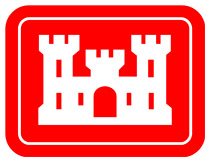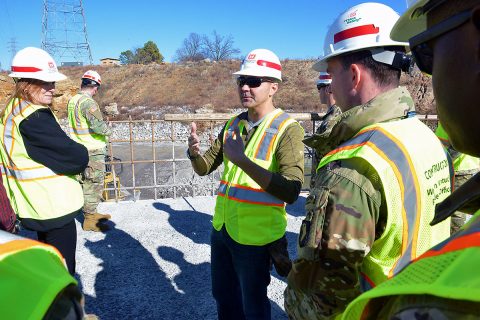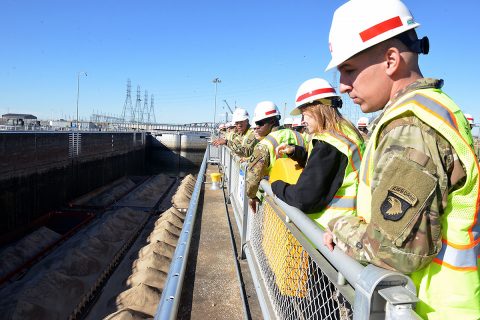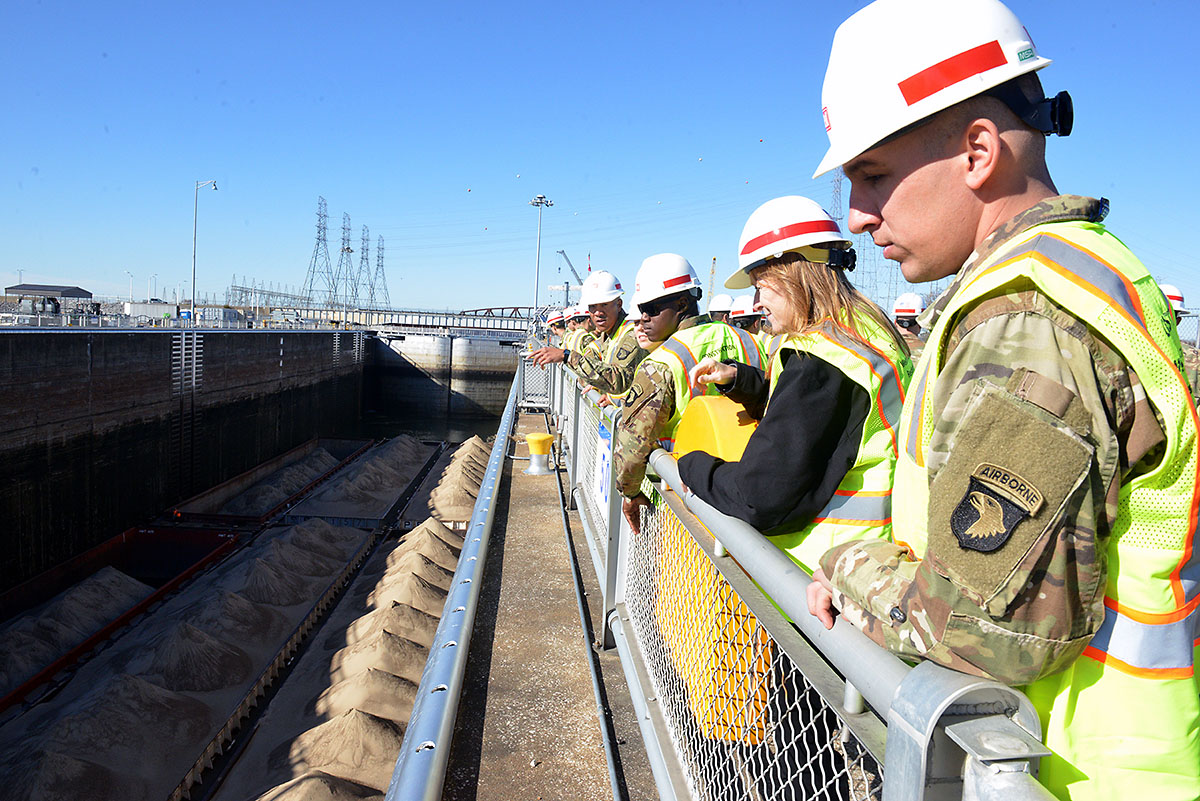 Grand Rivers, KY – U.S. Army Corps of Engineers Nashville District commander Lt. Col. Sonny Avichal welcomed Maj. Gen. (ret) Bryan Watson and Army Combat engineers from Fort Campbell’s 326th Engineer Battalion, 101st Airborne Division, for an overview and tour of the Kentucky Lock Addition Project.
Grand Rivers, KY – U.S. Army Corps of Engineers Nashville District commander Lt. Col. Sonny Avichal welcomed Maj. Gen. (ret) Bryan Watson and Army Combat engineers from Fort Campbell’s 326th Engineer Battalion, 101st Airborne Division, for an overview and tour of the Kentucky Lock Addition Project.
“We are glad you are here,” said Avichal. “This is a great opportunity for you to see a different part of the regiment that you don’t normally see as combat engineers.”

The group visited the U.S. Army Corps of Engineers Nashville District to learn more about USACE “civilian missions” as part of their professional development.
Combat engineers from the Fort Campbell’s 326th Engineer Battalion, are adept at mine-clearing, demolition, and construction projects in a combat environment.
Avichal said the combat engineers are great technical engineers and smart scientists but providing a tour like this helps them visualize and understand how they can be a part of the USACE if they choose in the future.
Avichal gave the group an extensive overview of the USACE mission and Nashville’s role as a district, which include flood risk management, navigation, hydropower, emergency management, and recreation.

Resident Engineer Jeremiah Manning explained about the current concrete shell placement, construction and even explained engineering issues. The new lock 1,200-foot by 110-foot lock will be located landward of the existing 110 x 600 lock and will accommodate modern barge tows without having to break the tows.
“Right now it can be a long wait sometimes,” said Manning. “But the new Kentucky Lock is going to help solve extensive wait problems and help this inland waterway be a more efficient system.
Manning said currently the lock’s current size requires a double lockage, which results in tow breaking apart. He said the new lock will reduce delays and allow for a tow to make one pass.
They walked along the new concrete lock walls, trekked across the massive Mitre gate, stepped down hundreds of scaffolds steps on the construction site, and into the depths of the partially constructed lock. They descended into the water intakes, which are giant 150-foot wide by 25-foot high tunnelways that will make it possible to fill the lock with 60 million gallons of water in 17 minutes.
“This is engineering at its finest,” said Maj. Jarrell Horsely from the 326th Engineer Battalion. “We don’t see massive projects being built every day.”
Manning told the group, the lock addition is one of the district’s largest and most important projects. On the way back up, the group observed the intakes and stopped to observe a tow boat, and witness how much time it takes for a barge to lock through.
“Products like this load of sand and coal have an effect on our everyday life,” said Manning. “Items such as gravel, coal, building materials, agricultural products, fuel, and products that make us more competitive globally.”
Watson said he is impressed by the huge responsibility that the Nashville District has and is always impressed to see innovative engineering.
“The Corps is doing a great job at this project and this is good information that these officers can use that will make them better engineers,” said Watson.
Watson, now a member of the Army’s executive leader development team, served as the 91st Commandant of the U.S. Army Engineers school. He continuously poured information into Soldiers during the tour and said young army officers should consider a tour of duty with USACE district.
“It is good to re-visit the Nashville District and see how the Corps has progressed,” said Lt. Col. Christopher Burkhart, 326th Engineer Battalion commander. Burkhart is a former Nashville District deputy commander. Burkhart said there has been a lot of noticeable differences have been made since he last visited the construction site.
Mike Looney, operations manager for the Western Kentucky Area Office, also provided an overview of recreational areas and the Lake Barkley operations.
“This tour has been great. I have a better understanding of these enormous structures and the importance of the project,” said Lt. Andrew Walther with the 326th Engineering Battalion.
Avichal was pleased to host this group of Army engineers and sees benefits for these tours.
“The engineer regiment, especially the branch of engineers within the Army is one of the most diverse professions that a young officer can choose and I hope tours like this will help them become better engineers,” said Avichal.
More than 25 Fort Campbell company and field grade officers interacted with civilian engineers and asked questions and learned from the unique challenges of maintaining aging infrastructure and about the mission of the Nashville District.
“It has been a mission of mine to bring a group back for training,” said Burkhart. “This has been an excellent opportunity for our young officers to learn more about
USACE missions and possibilities to consider in future career assignments.
For more news, updates and information please follow the Nashville District on Facebook at http://www.facebook.com/nashvillecorps and Twitter at http://www.twitter.com/nashvillecorps.



